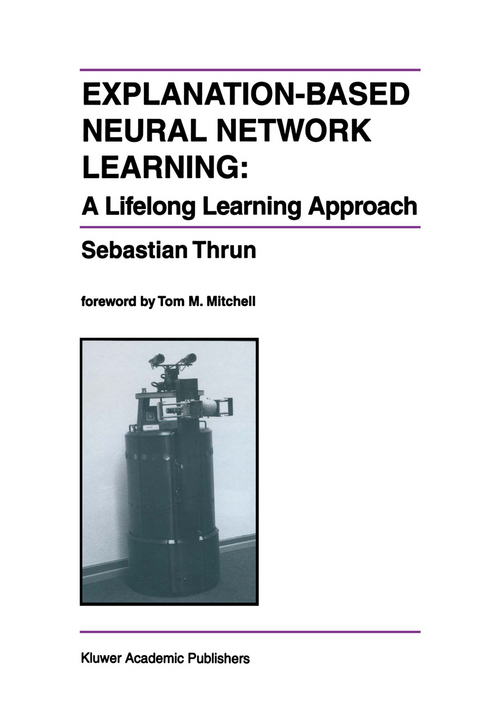
Explanation-Based Neural Network Learning
Springer (Verlag)
978-0-7923-9716-8 (ISBN)
`The paradigm of lifelong learning - using earlier learned knowledge to improve subsequent learning - is a promising direction for a new generation of machine learning algorithms. Given the need for more accurate learning methods, it is difficult to imagine a future for machine learning that does not include this paradigm.'
From the Foreword by Tom M. Mitchell.
1 Introduction.- 1.1 Motivation.- 1.2 Lifelong Learning.- 1.3 A Simple Complexity Consideration.- 1.4 The EBNN Approach to Lifelong Learning.- 1.5 Overview.- 2 Explanation-Based Neural Network Learning.- 2.1 Inductive Neural Network Learning.- 2.2 Analytical Learning.- 2.3 Why Integrate Induction and Analysis?.- 2.4 The EBNN Learning Algorithm.- 2.5 A Simple Example.- 2.6 The Relation of Neural and Symbolic Explanation-Based Learning.- 2.7 Other Approaches that Combine Induction and Analysis.- 2.8 EBNN and Lifelong Learning.- 3 The Invariance Approach.- 3.1 Introduction.- 3.2 Lifelong Supervised Learning.- 3.3 The Invariance Approach.- 3.4 Example: Learning to Recognize Objects.- 3.5 Alternative Methods.- 3.6 Remarks.- 4 Reinforcement Learning.- 4.1 Learning Control.- 4.2 Lifelong Control Learning.- 4.3 Q-Learning.- 4.4 Generalizing Function Approximators and Q-Learning.- 4.5 Remarks.- 5 Empirical Results.- 5.1 Learning Robot Control.- 5.2 Navigation.- 5.3 Simulation.- 5.4 Approaching and Grasping a Cup.- 5.5 NeuroChess.- 5.6 Remarks.- 6 Discussion.- 6.1 Summary.- 6.2 Open Problems.- 6.3 Related Work.- 6.4 Concluding Remarks.- A An Algorithm for Approximating Values and Slopes with Artificial Neural Networks.- A.1 Definitions.- A.2 Network Forward Propagation.- A.3 Forward Propagation of Auxiliary Gradients.- A.4 Error Functions.- A.5 Minimizing the Value Error.- A.6 Minimizing the Slope Error.- A.7 The Squashing Function and its Derivatives.- A.8 Updating the Network Weights and Biases.- B Proofs of the Theorems.- C Example Chess Games.- C.1 Game 1.- C.2 Game 2.- References.- List of Symbols.
| Erscheint lt. Verlag | 30.4.1996 |
|---|---|
| Reihe/Serie | The Springer International Series in Engineering and Computer Science ; 357 |
| Zusatzinfo | XVI, 264 p. |
| Verlagsort | Dordrecht |
| Sprache | englisch |
| Maße | 155 x 235 mm |
| Themenwelt | Informatik ► Theorie / Studium ► Künstliche Intelligenz / Robotik |
| Naturwissenschaften ► Physik / Astronomie ► Mechanik | |
| Naturwissenschaften ► Physik / Astronomie ► Thermodynamik | |
| ISBN-10 | 0-7923-9716-9 / 0792397169 |
| ISBN-13 | 978-0-7923-9716-8 / 9780792397168 |
| Zustand | Neuware |
| Informationen gemäß Produktsicherheitsverordnung (GPSR) | |
| Haben Sie eine Frage zum Produkt? |
aus dem Bereich


